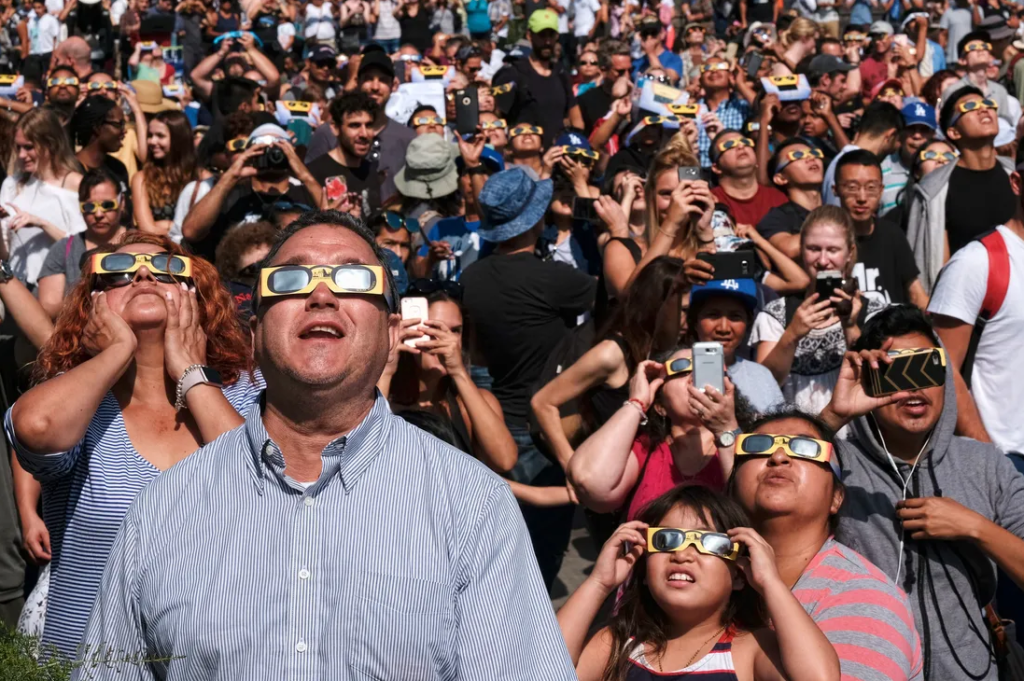|
Getting your Trinity Audio player ready...
|
On April 8, 2024, North America will be treated to a spectacular celestial event as a total solar eclipse crosses the continent, spanning Mexico, the United States, and Canada. A total solar eclipse occurs when the Moon passes directly between the Sun and Earth, obscuring the Sun’s face completely and casting a shadow on the Earth.
What to Expect
This upcoming total solar eclipse, set to occur on April 8, 2024, will be the last total solar eclipse visible from the contiguous United States until 2044. During a total solar eclipse, those within the path of totality – where the Moon’s shadow fully covers the Sun – will witness a remarkable event.
The sky will darken as if it were dawn or dusk, and if the weather permits, observers will be able to see the Sun’s corona, its outer atmosphere that is typically obscured by its bright face.
Watch Live
- YouTube: Broadcast Link
- NASA+ : Broadcast Link
- Facebook Live: Broadcast Link
- Twitch: Broadcast Link
Path of the Eclipse
The eclipse will commence over the South Pacific Ocean before making its way across North America. It will begin its journey over Mexico’s Pacific coast around 11:07 a.m. PDT. The path of totality then extends through various states in the United States, including Texas, Oklahoma, Arkansas, Missouri, Illinois, Kentucky, Indiana, Ohio, Pennsylvania, New York, Vermont, New Hampshire, and Maine.
Continuing its trajectory, the eclipse will cross into Canada through Southern Ontario, traveling through Quebec, New Brunswick, Prince Edward Island, and Nova Scotia. Finally, the eclipse will exit continental North America along the Atlantic coast of Newfoundland, Canada, at 5:16 p.m. NDT.
Safety First
It cannot be stressed enough that safety is paramount when viewing a solar eclipse. Looking directly at the Sun without appropriate eye protection, except during the brief total phase of a total solar eclipse, can cause severe eye damage.
Specialized eye protection designed for solar viewing, such as “eclipse glasses” or a safe handheld solar viewer, must be worn at all times during the partial phases of the eclipse. Indirect viewing methods, such as a pinhole projector, are also safe alternatives.
Prepare for the Spectacle
As the date approaches, be sure to mark your calendars and prepare for this incredible astronomical event. Remember, safety is key when observing the Sun during an eclipse. So, grab your solar viewing glasses, make a pinhole projector, or set up your telescope with a proper solar filter, and get ready to witness the magic of a total solar eclipse on April 8, 2024!



